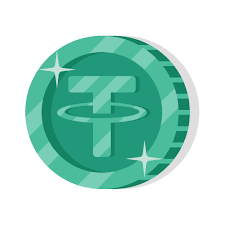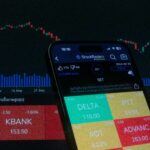In This article I will highlight the primary differences between the two most well-known stablecoins in cryptocurrency: USDC and USDT.
While both are pegged to the dollar, each possesses specific characteristics that affect their usage in trading, DeFi services, and institutional frameworks. Now, let’s get into the important comparisons between USDC and USDT.
About USDC
Created by the Centre Consortium which includes Circle and Coinbase, USDC (USD Coin) is a stablecoin that is pegged to the US dollar. It aims to offer a stable digital currency for transactions and other blockchain-based activities.
USDC is fully backed by sunk USD reserves, meaning they are not in circulation, and undergoes regular audits to guarantee transparency. It runs on different blockchains including Ethereum, Solana, and Algorand, commanding high liquidity and reliability.

In the crypto realm, USDC is widely accepted for trade, lending, value storage, and even cross-border transfers. It gives users a safer option compared to other volatile cryptocurrencies while taking full advantage of digital transactions.
About USDT
Tether Company issues USDT (Tether), a stablecoin that is maintained at a 1:1 ratio with the US dollar. Like a USD backed stablecoin, it intends to merge the reliability of the dollar with the dynamic aspects of a digital currency, which makes it an appealing option for trading and fund transfer in the cryptocurrency sphere.

Its usage transcends numerous blockchains such as Ethereum, Bitcoin through the Omni Layer, and Tron. USDT’s volatility makes it a favored option for crypto investors, but USDT has encountered challenges over the reserve transparency. Nevertheless, it endures as one of the leading stablecoins by market cap.
Issuers and Background
USDC: A Partnership for Transparency
The issuer of USDC is Centre Consortium, formed by two heavyweights of the crypto world, Circle and Coinbase.
The coin was launched in 2018 and was aimed at providing a stable and transparent digital currency with a guarantee that every USDC token equals a US dollar or another asset held in reserve.
Because of such auditing transparency and third-party audits in the market, usdc has managed to create a positive reputation in the market.
USDT: A Pivotal Contender with a Notorious History
In 2014, Tether Ltd. created the Tether stablecoin, also referred to as USDT. It modernized the concept of digital currencies by introducing the world’s first stablecoin. Despite USDT’s dominance in the market of stablecoins, it has faced considerable scrutiny for having controversial practices in Tether’s realm.
The most prevalent issue remaining at hand is the transparency of the “USD reserves backing Tether USDT,” better known as USDT. Tether maintains each USDT is backed with USD or equivalent assets, legally challenging those who accuse it of having insufficient reserves at some fraudulent periods.
The absence of regular and thorough audits of third-party finances has put Tether’s backing in doubt and made it a more controversial option when compared to USDC.
Clear Visibility and Audits
USDC: Established on Trust and U.S. Government’s Currency
The amount of cryptocurrency that Tether is circulating directly impacts the amount of money that the entity needs to reserve for free accessing tokens provided to clients.
This is one of the major differentiators that USDC has as its aid in gaining people’s trust, is USDC’s stance on full transparency on stablecoins. USDC is fully backed with US dollars or short-term bonds issued by the United States government and is regarded as a great stablecoin.
Unlike Grant Thornton OHAG, the US accounting firm worked as the issuing auditor, Circle at the back of USDC issues attestations monthly counter-proofing the amount in USDC reserves compared to the USDC Hyper circulation. And these audits performed by Circle are what makes USDC ideal for users willing to trust digital assets as they stand for reliability and trust.
USDT: Questions Around Backing
On the other side, Tether has received plenty of criticism for not providing the same level of transparency. While Tether insists that its USDT tokens are fully backed by USD or equivalent assets, it has faced a number of legal disputes concerning its reserves.
Tether has faced allegations for not possessing adequate liquid assets to support his issuance of USDT, toward which his audits have also been quite erratic. In spite of these concerns, USDT is still the most traded stablecoin, however its non-transparent backing has made a range of retail and institutional investors skeptical of its sustained stability.
Blockchain Compatibility
USDC: Versatility Across Multiple Blockchains
When it comes to flexibility, USDC is noted for it. Originally minted on the Ethereum blockchain as an ERC-20 token, USDC has since grown to operate in other blockchains like Solana, Algorand, Avalanche, and Tron. This multichain also offers support for users’ preferred blockchain on the basis of speed, low fees, or support for specific apps.
The adaptability of USDC is a key driver of interest for applications in decentralized finance (DeFi) Systems and Decentralized Exchanges (DEXs) that require speed and higher levels of scalability. Its use across multiple blockchains enhances its liquidity and adoption thus allowing USDC to be utilized in various ecosystems.
USDT: A Broad but Concentrated Presence
Just like USDC, USDT is also offered on a variety of blockchains such as Ethereum, Bitcoin (through Omni Layer), Tronn and many others. Its highest level of adoption exists on the Tron network where it is widely used for trading and transferring assets.
Despite its broad, although USDT tends to be criticized for its concentrated usage on specific platforms and chains in comparison to USDC’s flexibility across chains which is a hallmark of USDC. This could reduce the potential adaptability of USDT to emerging blockchain technologies and ecosystems.
Adoption and Use Cases

DeFi and Institutional Applications
As a primary use stablecoin, USDC has built a reputation for being trustworthy and well-regulated, which makes it suitable for educational users, institutions, and developers who need a stablecoin with plausible audits and compliance.
Its use on Ethereum and other chains has also resulted in its adoption in DeFi application, where users collateralize, yield farm, or partake in other financial activities.
Moreover, USDC has been adopted by several major platforms such as Circle’s own USDC Treasury and platforms like Compound, Aave and Uniswap.
The role of this stable-coin in De-fi and the entire blockchain ecosystem is ever-growing, especially when preliminary lawmakers start paying closer attention to ensuring stablecoins follow financial regulations.
USDT: Big Shot in Trading and Liquidity
USDT is the most traded stablecoin in volume and preferred by crypto exchanges on trading pairs and liquidity. Because of its early market entry and frequent use, it is often the first option for traders seeking a liquid and readily available USDT.
It is frequently used as a quote tether against leading cryptocurrencies such as Bitcoin (BTC), Ethereum (ETH), and others, making it a basic component in the market for swift transactions.
USDT continues to be suspicious but important in the cryptocurrency world, especially for countries with less regulation. For many users, the absence of regular audits is a critical issue, but not as grave as the risk of losing smooth mass-scale transactions the coin offers.
Security and Regulation
USDC: Regulatory-Friendly
When compared to USDT, USDC is less prone to regulatory scrutiny. This is primarily attached to its focus on compliance and also its ability to reassure institutional investors and users that the operations involving their assets are compliant with laws, especially with those of the US.
The regulatory sandboxes for stablecoins is still being formulated, however, USDC is always seen as a stablecoin that exists within the parameters of global check and balances.
USDT: Regulatory Scrutiny
On the other side of the water, USDT has come under multiple investigations from U.S. authorities for its purported reserve claims and its supposed role in the movement of funds for offshore platforms. The risk of regulatory scrutiny stemming from Tether’s lack of transparency surrounding reserve backing may present challenges for users down the line if more stringent regulations are implemented.
Which is Better USDC or USDT?
| Factor | USDC (USD Coin) | USDT (Tether) |
|---|---|---|
| Issuing Company | Circle and Coinbase (Centre Consortium) | Tether Ltd. |
| Launch Year | 2018 | 2014 |
| Backing | Fully backed 1:1 by USD or equivalent assets | Claims to be 1:1 backed by USD, but has faced scrutiny |
| Transparency | Regular third-party audits by Grant Thornton | Irregular audits, faced legal scrutiny over reserve backing |
| Blockchain Compatibility | Ethereum, Solana, Algorand, Avalanche, Tron, and others | Ethereum, Bitcoin (Omni Layer), Tron, and others |
| Audit Frequency | Monthly audits | Inconsistent audits, limited transparency on reserves |
| Liquidity | Moderate (growing in DeFi) | Very high (dominates stablecoin market by trading volume) |
| Main Use Cases | DeFi platforms, institutional transactions, payments | Trading, liquidity management, market-making, crypto exchanges |
| Market Dominance | Second largest stablecoin by market cap | Largest stablecoin by market cap |
Conclusion: USDC vs USDT
Ultimately the decision between USDC and USDT comes down to individual preference because both forms of currency offer unique advantages.
Transparent and audit driven frameworks of governance make USDC the superior choice. Its broad acceptance across institution, popularity in decentralized finance, and versatility across diverse blockchains further enhance its credibility.
Still, if someone’s concerned primarily with liquidity and market activity, trading ease, and overall convenience, trading with USDT has proven time and time again to be the most favorable option. It is evident that its market existence and widespread use on exchanges makes it a suitable choice for high trading activities, even though the backing of its reserves are somewhat opaque.
Every stablecoin fulfills its role in different scenarios, and knowing the distinctions can ensure you select the most optimal option to serve your purpose within your crypto endeavors.









